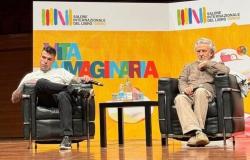BORCA DI CADORE. It can barely be seen among the Antelao woods still halved by the Vaia storm. The one that has been there for decades large colony of the Eni Villagethe largest contemporary Alpine tourist complex, is today – thanks to “Contemporary Dolomites” platform – a place of creative inspiration for artists in residence (waiting to become a center for services and research linked to the mountains which can become a driving force for the Belluno area, and beyond).
A structure of 30 thousand square meters designed between the fifties and sixties by Edward Gellnerarchitect and close friend of Enrico Mattei, president of Eni and visionary entrepreneuramong the great protagonists of the post-war period.
In fact, it was his idea to create, in 1954a real holiday village for its employees Borca di Cadore; a quite innovative social equity projectan expression of intelligence and care, as well as particular attention to corporate well-being and human satisfaction on the part of the employer towards his collaborators.
A pioneering structure with “extraordinary potential”as it was defined by Gianluca D’Incà Levis, architectcreator and curator of the cultural regeneration and recovery platform for industrial spaces “Dolomiti Contemporanee”, designed taking into account the surrounding environment so as not to overwhelm nature.
A architectural complex capable of harmoniously combining round and angular shapes and different materials (among all, wood and concrete, glass and rubber) and color experimentswhich, in addition to the large Colony, includes a fixed tent camping, two hotels (Boite and Corte), a church (designed by Gellner with the contribution of Carlo Scarpa), 264 single-family houses And other secondary structures.

A structure that in the early 2000s was purchased by Minoter Company/Cualbu Groupwhich, in 2014 started, “in the logic of its valorisation – explains D’Incà Levis – a significant collaboration with “Dolomiti Contemporanee” which then materialized in “Borca Project”a regeneration platform shared with the territory, its communities and its governance, which for ten years has equipped relationships and generated ideas, strategies, networks, practices, project guidelines, to reawaken the prodigious Colony and imagine its use ”.
Today, seventy years later since the project, the great Colonia continues to fascinate and intrigue. Not only the students of architecture and visual arts but also the inhabitants of the Cadore Valley and the Triveneto.
The spaces, open to the public on extraordinary occasions (such as, for example, last April 25th or during the month of August) host various artists in residence to whom the task of is entrusted produce works of art and installations aimed at enhancing the site.








